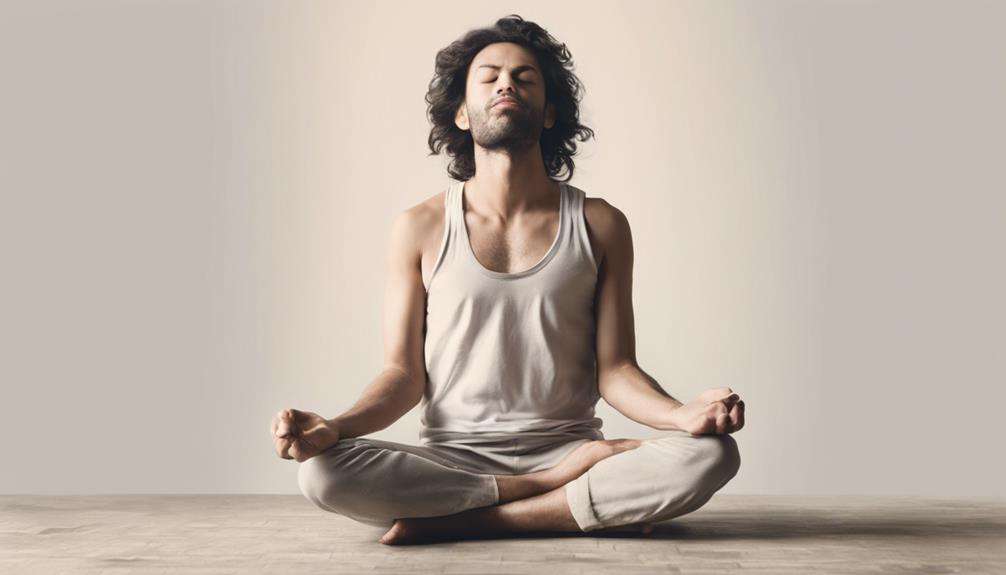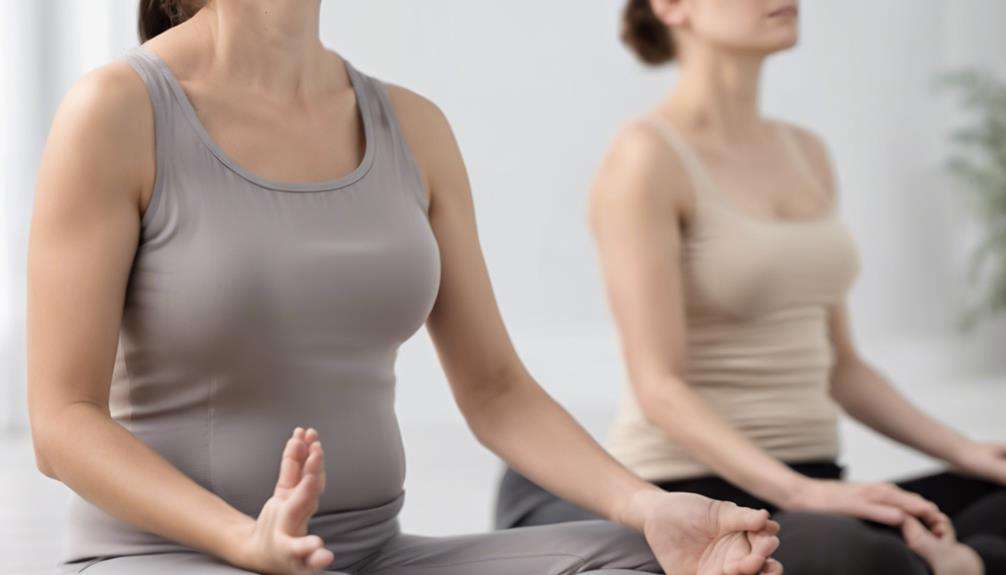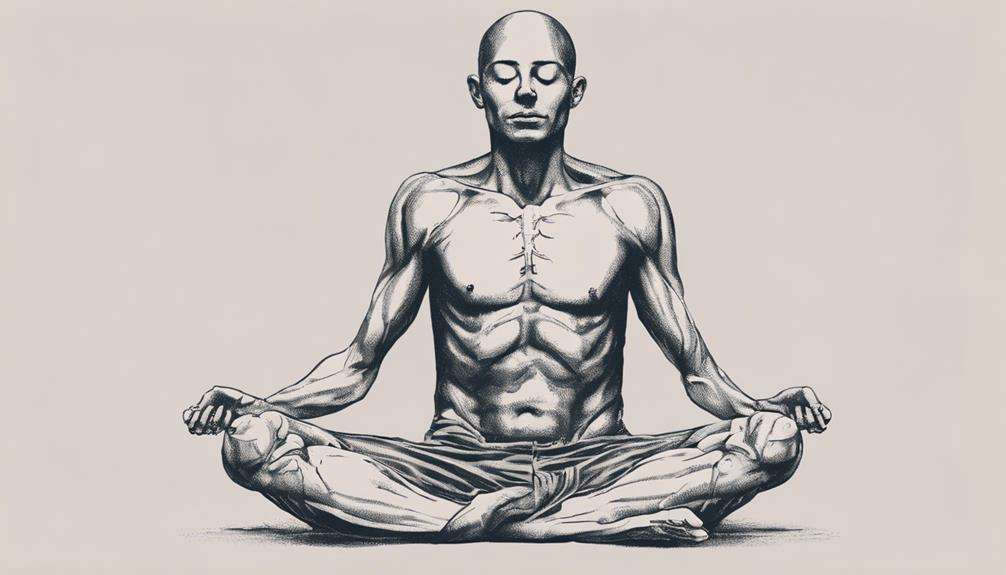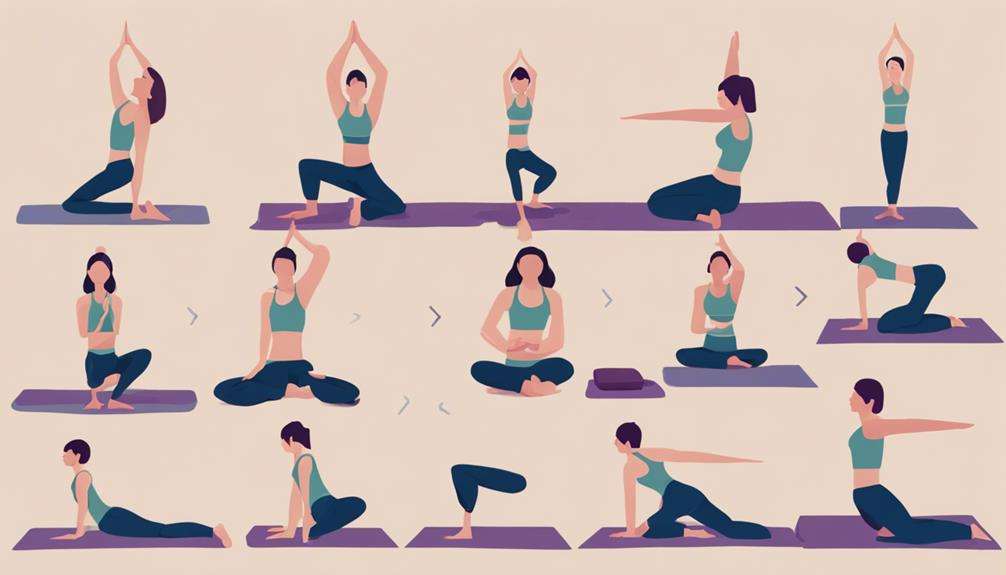Did you know that incorporating breath control techniques into your daily routine can greatly impact your holistic wellness?
By mastering the art of conscious breathing, you can reveal a myriad of benefits for your mind and body.
From reducing stress levels to enhancing mental clarity, these 7 breath control techniques hold the key to a more balanced and tranquil life.
Each technique offers unique advantages that can transform your well-being.
So, why not explore these powerful practices and discover the profound effects they can have on your overall health and vitality?
Key Takeaways
- Diaphragmatic and box breathing enhance wellness and reduce stress.
- Alternate-nostril breathing and ocean sounding breath promote balance and tranquility.
- Buteyko technique improves respiratory function and oxygen utilization.
- HRV biofeedback fosters coherence, mental health, and overall well-being.
Diaphragmatic Breathing Technique
If you're seeking a simple yet powerful way to enhance your overall well-being, consider practicing diaphragmatic breathing regularly. This type of breathing involves engaging your diaphragm to promote deep, slow breaths. By focusing on breathing deeply into your abdomen, you can fully fill your lungs and lower stress levels effectively. Diaphragmatic breathing isn't just about oxygen exchange; it also plays an important role in activating the parasympathetic nervous system, which is responsible for inducing a state of relaxation in your body and mind. This technique is a great tool for stress reduction and enhancing respiratory function.
When you practice diaphragmatic breathing, you aren't only improving your oxygen intake but also calming your entire system. The benefits extend beyond just the physical aspect; they contribute to your overall well-being by creating a sense of peace and tranquility within you. Incorporating diaphragmatic breathing into your daily routine can be a transformative practice that boosts your holistic wellness significantly.
Box Breathing Method
Shifting from diaphragmatic breathing, another effective breath control technique to enhance your well-being is the Box Breathing Method, also known as square breathing. This method involves a structured pattern of inhaling, holding, exhaling, and holding the breath, all in equal counts. Here are some key points to highlight the benefits of Box Breathing:
- Regulates Autonomic Nervous System: Box breathing helps regulate the autonomic nervous system, promoting relaxation and reducing stress.
- Improves Cognitive Performance: Enhancing oxygen flow to the brain, this technique can boost focus, concentration, and cognitive performance.
- Anxiety Management: Widely used by military personnel, athletes, and those seeking anxiety management, box breathing aids in emotional balance.
- Enhances Overall Well-being: Just a few minutes of daily practice can have profound effects on your emotional balance and overall well-being.
Incorporating the Box Breathing Method into your routine can be a simple yet powerful way to nurture your mind and body, promoting a sense of calm and clarity in your daily life.
Alternate-Nostril Breathing Practice

If you're looking to enhance your well-being, consider trying Alternate-Nostril Breathing.
This technique, known as Nadi Shodhana, can help balance your energy channels and bring a sense of calm to your mind.
Benefits of Nadi Shodhana
How can practicing Nadi Shodhana, also known as alternate-nostril breathing, benefit your overall well-being and mental clarity? Here are some key advantages of incorporating this technique into your routine:
- Balances the left and right hemispheres of the brain.
- Calms the mind, reducing anxiety, and enhancing focus and concentration.
- Regulates the autonomic nervous system, promoting relaxation and stress relief.
- Improves respiratory function, increases oxygen flow, and supports overall well-being.
Steps for Practice
To begin practicing alternate-nostril breathing, find a comfortable seated position with your spine straight and shoulders relaxed. This pranayama technique, rooted in yoga, allows you to harmonize energy within by breathing through alternate nostrils.
As you gently close off one nostril with your thumb and inhale through the other, then switch to exhale through the opposite nostril, you enhance mental clarity and focus. This mindful practice aids in reducing stress, promoting relaxation, and fostering a sense of calmness.
Regular practice of alternate-nostril breathing can improve respiratory function, boost immunity, and support overall well-being. Embrace this simple yet powerful technique to breathe, balance, and benefit from its holistic effects.
Ocean Sounding Breath Exercise
Engage in the soothing practice of Ocean Sounding Breath Exercise, also known as Ujjayi Pranayama, to cultivate mindfulness and enhance your overall well-being. Here's why this breathing technique is beneficial for you:
- Regulates Breathing: Ujjayi Pranayama helps in regulating your breathing patterns, promoting a sense of calm and focus during your yoga practice.
- Internal Warmth: By engaging the diaphragm and expanding lung capacity, this technique generates internal warmth in the body, aiding in relaxation.
- Soothing Sound: The rhythmic sound of Ujjayi breath resembles the gentle ebb and flow of ocean waves, fostering a tranquil state of mind.
- Stress Reduction: Incorporating Ocean Sounding Breath into your routine can assist in reducing stress levels, enhancing mental clarity, and improving overall well-being.
Buteyko Breathing Technique

Shifting from the soothing rhythms of Ocean Sounding Breath Exercise, explore the Buteyko Breathing Technique to optimize your respiratory function and promote comprehensive wellness. This technique focuses on breath control, aiming to reduce overbreathing and elevate carbon dioxide levels in your body. By incorporating nasal breathing and breath-holding exercises, the Buteyko method works to enhance your respiratory function. Developed by Konstantin Buteyko, this technique is known for its effectiveness in managing asthma, anxiety, and other breathing-related conditions.
Through the practice of the Buteyko Breathing Technique, you can improve your oxygen utilization, increase lung capacity, and experience stress relief. Research suggests that this method may help normalize breathing patterns and alleviate symptoms of respiratory disorders. By integrating these techniques into your daily routine, you can work towards achieving a healthier and more balanced respiratory system, leading to overall well-being and vitality.
Laughter Yoga Breathing Technique
Discover how the Laughter Yoga Breathing Technique intertwines laughter and deep breathing to enhance your holistic wellness journey. Laughter Yoga, originating in India, is a practice that combines intentional laughter with deep breathing exercises. Here's what you need to know:
- Reduce Stress: Laughter Yoga incorporates playful exercises and deep breathing techniques, which can help reduce stress levels.
- Boost Immune Function: By increasing oxygenation through deep breathing, this technique may also boost immune function.
- Enhance Cardiovascular Health: The combination of laughter and deep breathing can have positive effects on cardiovascular health.
- Release Endorphins: Laughter Yoga is known to release endorphins, promoting relaxation and overall well-being.
This practice isn't only fun but also beneficial for improving lung capacity, reducing anxiety, and fostering a positive outlook on life. Give yourself the gift of laughter and deep breathing for a healthier, happier you.
Heart Rate Variability Biofeedback Practice

Embark vital a journey of self-awareness and well-being through the practice of Heart Rate Variability (HRV) biofeedback training. HRV biofeedback involves monitoring and controlling the intervals between heartbeats, offering insights into the body's stress response and autonomic nervous system function.
This non-invasive method can enhance self-regulation, improve emotional well-being, and alleviate symptoms of anxiety and depression. Studies indicate that regular HRV biofeedback practice can help achieve coherence, aligning heart, mind, and emotions.
By influencing HRV patterns through breath control and relaxation techniques, individuals can optimize both their physiological and psychological health. This practice allows you to tap into your body's natural rhythms, fostering a sense of balance and harmony within.
Through HRV biofeedback, you can empower yourself to regulate your responses to stressors, promoting overall wellness and vitality. Start your journey towards emotional balance and holistic health with HRV biofeedback today.
Frequently Asked Questions
What Is the Holistic Breathing Technique?
To understand the holistic breathing technique, focus on integrating mind, body, and spirit. Enhance relaxation, reduce stress, and promote overall well-being. Deep breathing enhances physical health, emotional balance, and spiritual connection. Find inner peace through breath control.
What Are the 5 Main Breathing Techniques?
When it comes to breathing techniques, you've got a range to choose from. Deep, diaphragmatic, alternate nostril, box, and belly breathing all have unique benefits for your well-being. Try these methods for relaxation and mindfulness.
What Is the 4-7-8 Technique?
To practice the 4-7-8 technique, you inhale for 4 seconds, hold for 7, and exhale for 8. It aids in stress relief, anxiety reduction, and sleep quality. This simple breathing exercise fosters a calm mind and emotional balance.
What Are Breathing Control Techniques?
To understand breathing control techniques, start with mindful inhaling and relaxing exhaling. Engage in deep breathing exercises, diaphragmatic breathing, and pranayama practice for balanced respiration. Cultivate controlled breath, breathing rhythm, and breath awareness for holistic wellness.
Conclusion
As you incorporate these breath control techniques into your daily routine, you'll experience a profound shift in your overall well-being.
Take Sarah, for example, who struggled with anxiety and stress at work. By practicing diaphragmatic breathing daily, she found herself feeling calmer, more focused, and better equipped to handle challenging situations.
Embrace the power of your breath to cultivate inner peace and holistic wellness in your life. You deserve it.






